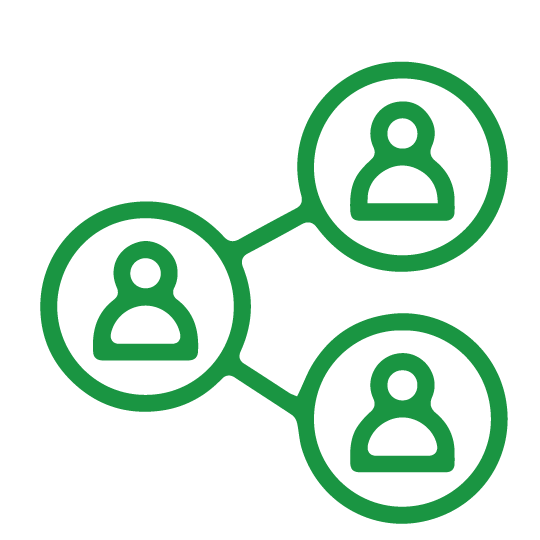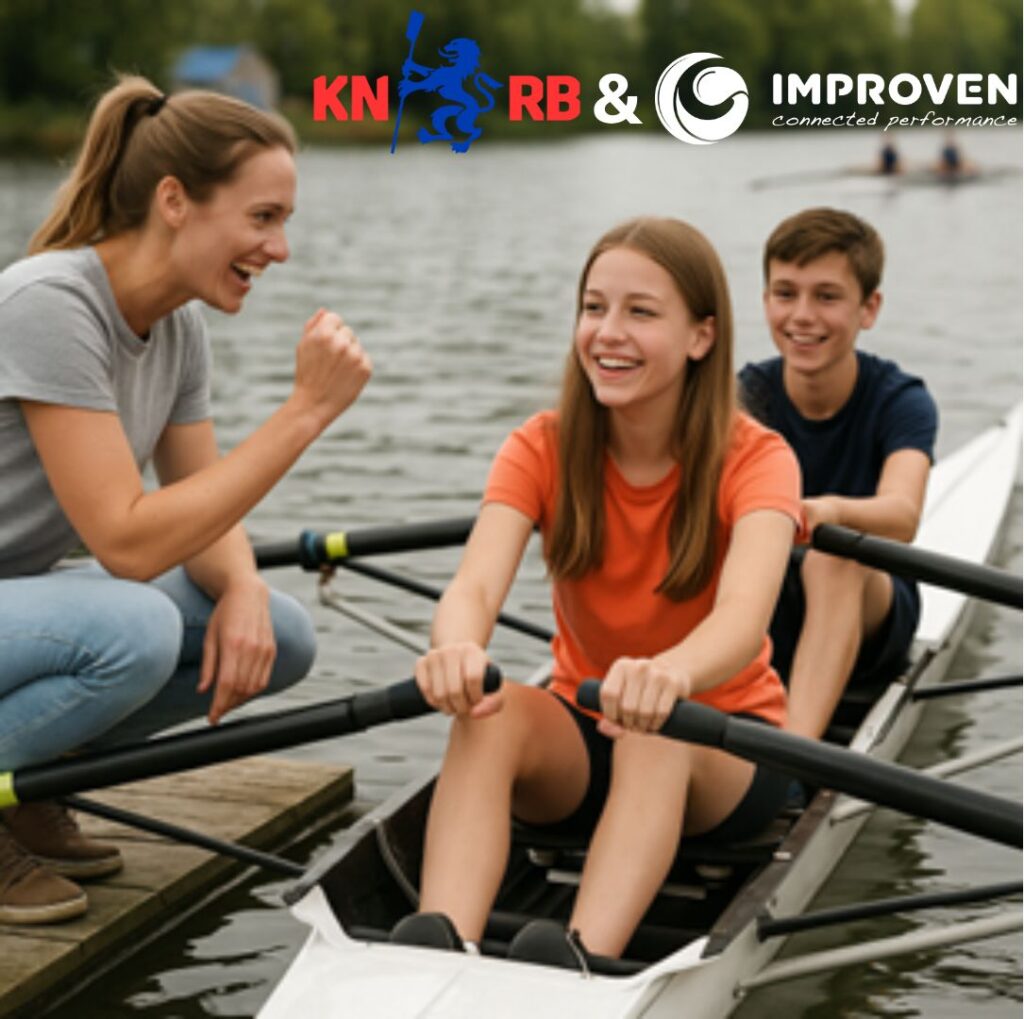GETTING MORE YOUNG PEOPLE ON BOARD WITH DESIGN THINKING
Last summer, IMPROVEN got in touch with the Royal Dutch Rowing Association (KNRB). Because despite the ambitions and all the promising initiatives in recent years to attract more young people (10-18 years old), the number continues to decline. This at a time when the KNRB wants to encourage growth and vitality of young people, continue to achieve top-level sporting performance and an ageing rowing population is occurring. How can we recalibrate our approach to reverse this declining trend?
The KNRB asked IMPROVEN to support it in this. Making social impact is something we strongly believe in as an organisation. And the opportunity to contribute to the sports participation of young people is unique and valuable. We therefore entered into this collaboration with conviction.
Strategy formation and execution
For the KNRB, realising a joint strategy with its associations is a major challenge. This is because of the unique context in which the KNRB operates, a sports organisation that runs largely on its many volunteers. The sport of rowing in the Netherlands is organised in a network of independent associations. Within these associations, there is logically a variety of ambitions, management power and local contexts. In such an environment, it is challenging to effectively translate national ambitions into concrete local actions. This requires an approach that gives direction and also leaves room, that is supported and supports associations in their ambition and possibilities.
Our observations is that this was lacking, which meant that strategy and approach did not sufficiently match the wishes and needs of the associations and young people.
Design Thinking
To be able to develop such an approach as well as create effective solutions, in-depth knowledge of juniors and associations is essential. To gain valuable insights into the playing field, we used the Design Thinking methodology. In doing so, we focused on the first phases: Discover and Define.
To do this, we gathered information and tested assumptions to best understand the context. We looked at the challenge for the associations from a target group approach with personas. A persona represented a group of associations with similar characteristics, which helps enormously in exploring specific needs and wants.

We divided the 100+ associations into four types of personas; from most to least likely including influencing factors that contribute to this success rate. The target group approach shows that associations are very different. And because there was one strategy and approach for all clubs from the KNRB, not all clubs were able to work effectively to increase the number of juniors.
Besides understanding associations, understanding young people is also essential. Design Thinking often uses customer journeys To map out a 'journey' of your target group. The aim of this is to create an understanding of what attracts young people to rowing, what choices they make to become members and what factors make them stay in the sport. With an understanding of this, the KNRB can better respond to recruiting and retaining this target group. For example, the interviews revealed that for young people, the (social) atmosphere at the rowing club is at least as decisive for their choice of sport as the sport itself.
The result: recalibration of the approach
With this trajectory, the KNRB gained valuable insights for better strategy definition and successful strategy execution. The solution direction is clear: sharpen the strategy and plan of approach through a focused target group approach. Design Thinking tools such as personas (of clubs and juniors) and customer journeys for juniors help this immensely.
For the KNRB's strategy formation, this means that deeper insights will lead to sharper quantification, targeted (proposition) choices and more concrete (sub)goals than the current general target: 'x-number of more juniors (10-18 years) at clubs'. This results in clear, supported and measurable goals that give direction to a planned and appropriate approach. No 'one size fits all', but a strategy that suits different types of associations and young people.
We incorporated these insights into an advisory report with tools and handles. In doing so, the magnifying glass was also put on the preconditions needed for a successful project approach: such as division of roles within the KNRB and the project portfolio. During a workshop with the junior committees, these insights were translated into concrete follow-up actions.
As IMPROVEN, we are only satisfied when the client is. Therefore, we are pleased that after this recalibration, KNRB will continue to refine and concretise its growth ambitions with full enthusiasm.






















